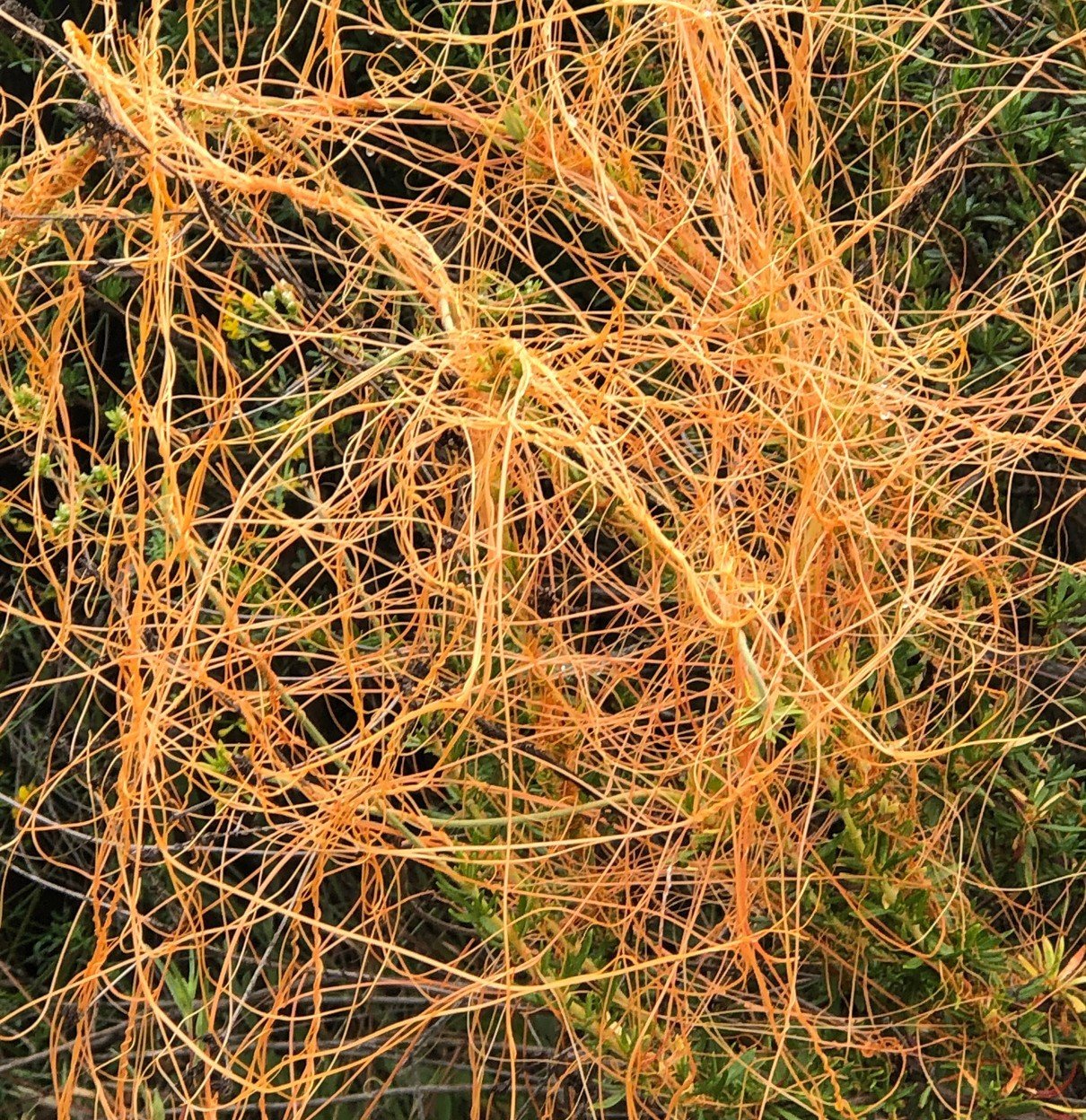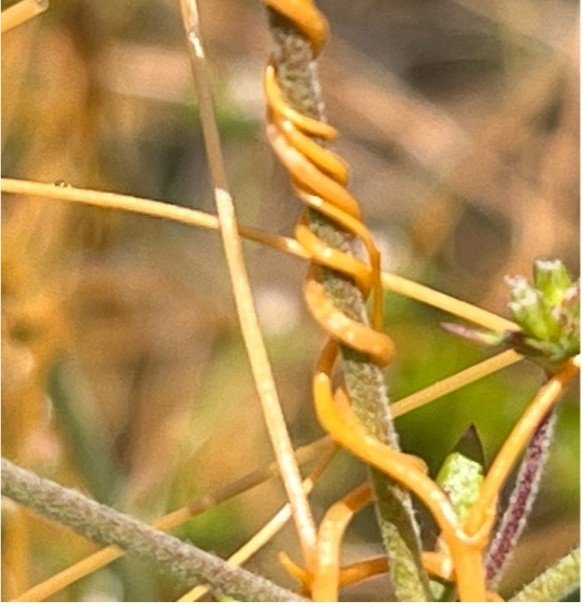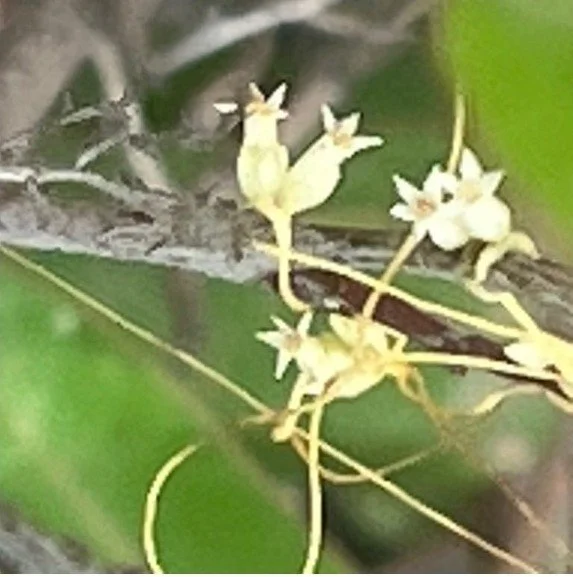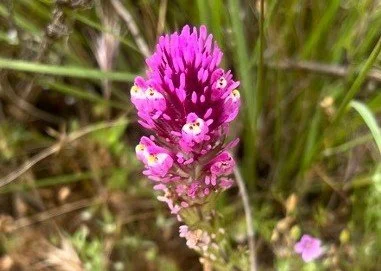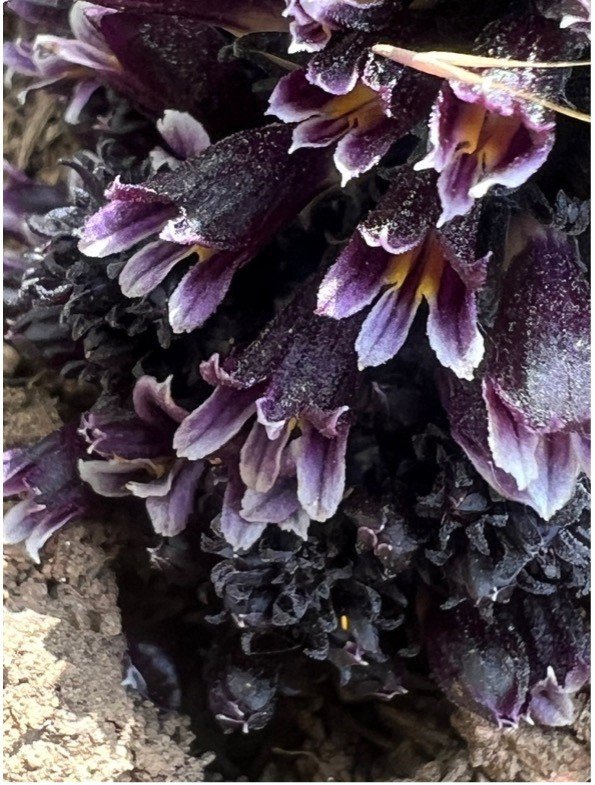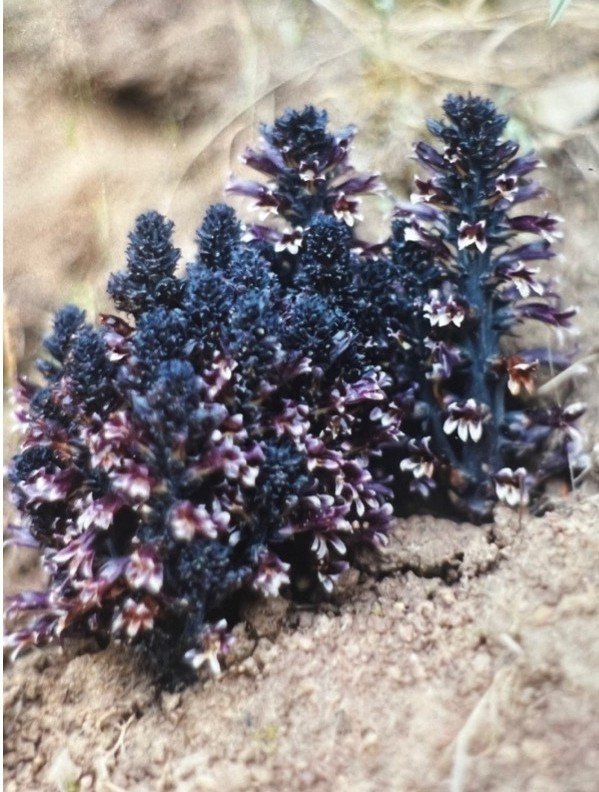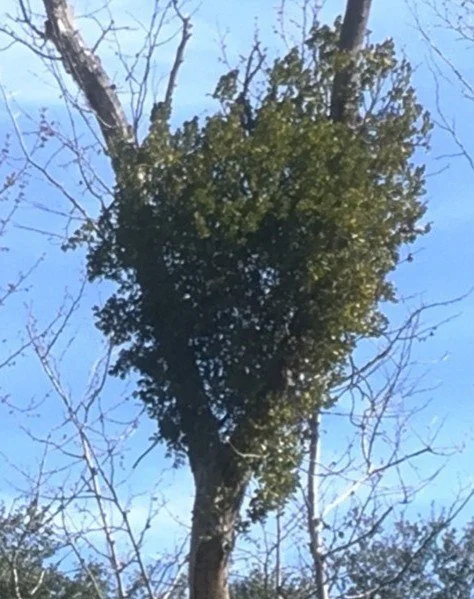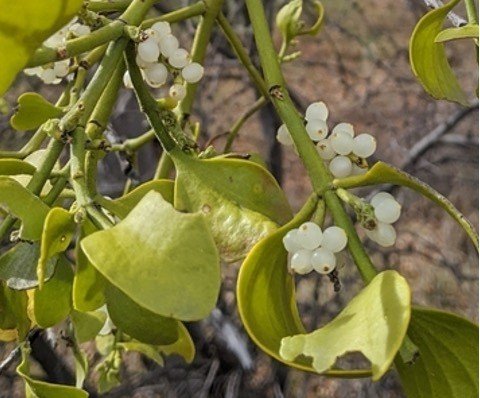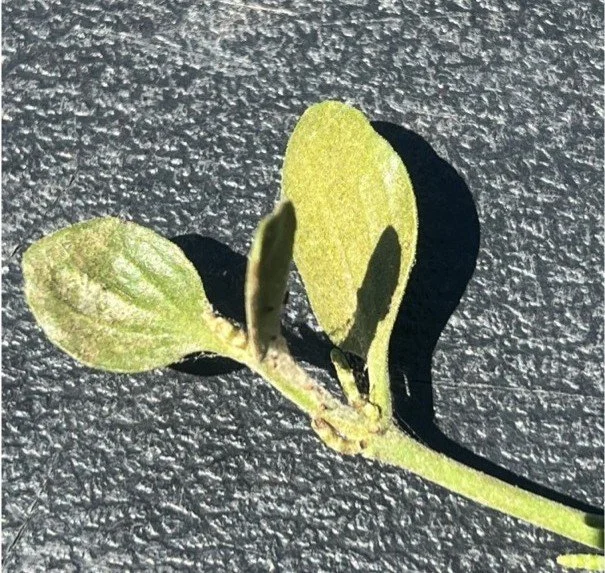Approximately 99% of plants on earth make their own food (sugars) by the process of photosynthesis. They also acquire their water and minerals through their roots and, in rare cases, their leaves, but about 1% of plants derive some or all their nutritional requirements from another living plant. These are the parasitic plants.
All parasitic plants develop a specialized root-like organ called the haustorium, which penetrates the host plant, connecting them to the host’s vascular tissue (veins/pipelines) that carry water and minerals up, and sugar down.
The following are some parasitic plants found in Blue Sky:
Dodder
This orange vine is Blue Sky’s most abundant parasitic plant. Dodder seeds germinate in soil and must find a host plant within a few days. If they don’t find a suitable host the seedlings will die. Seedlings that find a suitable host twine around the plant and insert haustoria into the tender stem. The haustoria penetrate and tap the plant's vascular system for water, minerals, and sugars. They rely upon their host plant for survival. Once the vine taps the host plant its connection to the soil is severed. Small, white, bell-shaped flowers form in late summer and early fall and can produce copious amounts of seeds. In Blue Sky, sumac and buckwheat are favorite host plants of dodder.
Dodder on buckwheat Dodder vine wrapped on host plant Dodder flowers
OWL’s clover
Photo by A Torretto
This common pink/purple spring wildflower is a species of hemiparasite, deriving some of its nutrients directly from the roots of other plants by infiltrating them with haustoria. As a result, its own leaves are small and reduced. Some of its host plants are California poppies, lupines, and California goldfields. Owl’s Clover is an annual plant and must sprout from seeds each year.
Chaparral Broomrape
This plant parasite spends most of its life underground growing attached to the roots of shrubs, usually chamise. It is a true parasite because it lacks leaves and chlorophyll and must take all of its nutrients (sugar, water, and minerals) from a host plant.
The only time you will see chaparral broomrape is when it grows its flowers above ground to reproduce. The dark purple inflorescence of several flowers form a small “Christmas tree” shaped grouping that sticks out of the ground.
Detail of Chaparral Broomrape flowers Grouping of Chaparral Broomrape flowers
Broad Leaf MistleToe
This species of mistletoe is a partial parasitic plant on a variety of trees and woody shrubs in BlueSky. It is usually found on sycamore trees. As a hemiparasite the mistletoe taps its host tree for water and nutrients but contains chlorophyll and can photosynthesize sugars for itself.
The plant produces clusters of flowers with white to light pink berries. These juicy berries are eaten and spread by the phainopepla, or silky-flycatcher. When eaten, the seeds pass unharmed through the bird’s digestive system. If the birds’ droppings happen to land on a suitable branch the seeds stick and grow into another mistletoe plant.
On Sycamore in Blue Sky Berries Leaves Phainopepla
The text and most of the images were provided by biologist Al Torretto.

